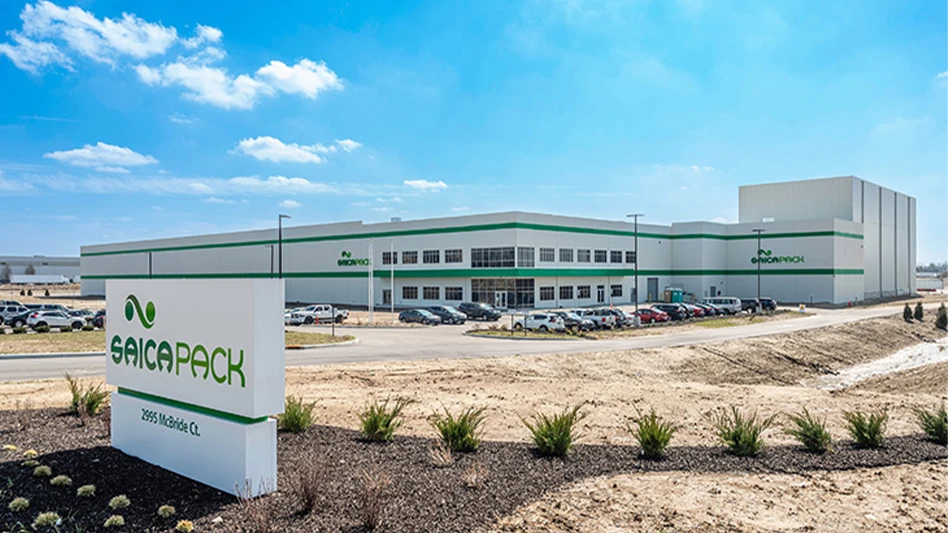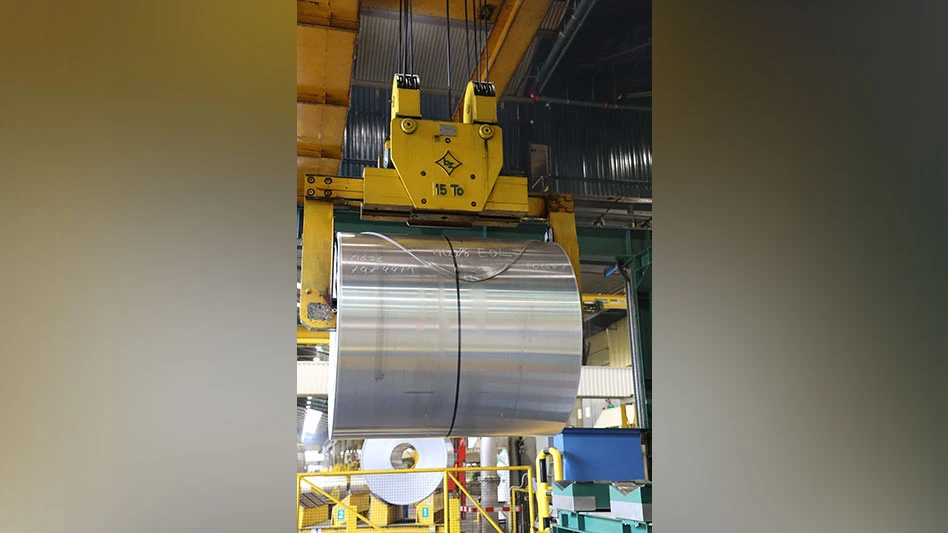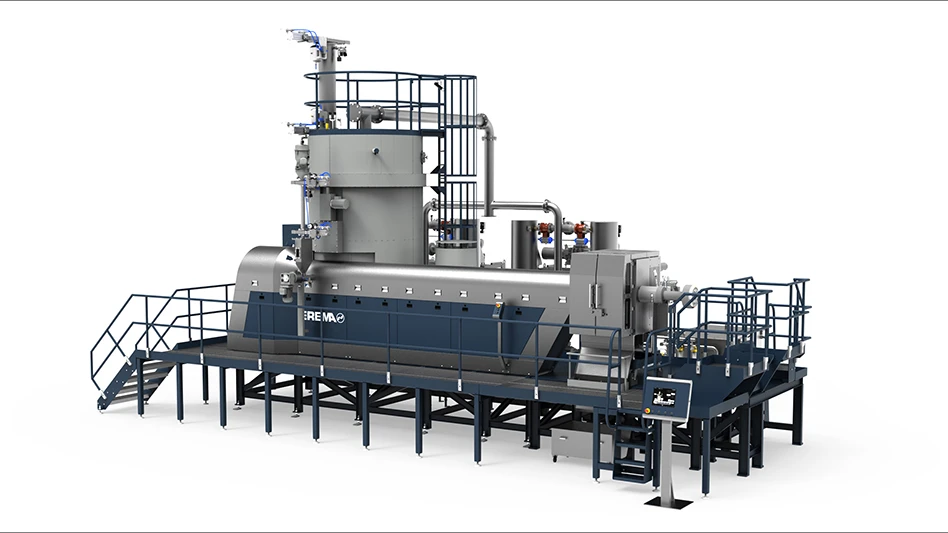If you have any friends or associates who have flown out to a golfing vacation, tip your hat in their direction. They have done more than their share to light a fire under the titanium scrap markets. In short, the story of titanium in the past 12 months has been the story of golf clubs and commercial air planes.
Golf clubs are the hottest news in the titanium market. It remains to be seen whether this is a flash in the pan or whether golf will have the same impact on titanium that soda cans have on the aluminum market. There is no question, however, that golf clubs have given a whole new meaning to the market. Publicly held stocks of titanium producers have gone through the roof. The price of titanium has gone up 50 percent. Scrap markets are booming. And much of the credit goes to the folks who want to smack a little white ball a bit farther, a bit straighter.
Lead times for titanium production are as long as anyone can remember in recent years. While the market for obsolete scrap is not that big – only a few hundred tons – demand for new titanium scrap turnings continues to thrive. Some market observers are pinning their hopes for a stable titanium sponge market on the availability of prompt scrap.
The industrial market demand for titanium remains strong around the world, but the hottest area for titanium appears to be the Pacific Rim. The strong, stable world economy is putting titanium-consuming projects such as power plant construction and chemical processing operations on a solid footing. Any project which requires corrosion-resistant construction like power generation and environmentally sensitive manufacturing is experiencing an inflow of capital investment. Titanium, commonly used in coatings and as an alloy, especially in steel, is getting its share of the riches.
Outside of the United States, the major producers are limited to Japan, Russia and Kazakstan. While the Ukraine had sizable capacity, nobody seems to have a good handle on what is happening there. One week the rumor is that production is going to be re-activated any day. The next week conventional wisdom says the equipment is gone and there is nobody there who could operate it.
Anti-dumping duties are making it difficult for some overseas firms to move titanium into the U.S. However, there are ways around the duties. One is temporary import bonds. Another is to send sponge to Europe, melt it there, and then ship it into this country. "Russia is the key," says John Lane, executive vice president of sales for Suisman Titanium Corp., Hartford, Conn. "Kazakstan is very much alive, very big. I’ve heard all of the conflicting stories about the Ukraine – who knows? Nobody will know what happens until it hits the market. The Ukraine market is uncontrolled and unknown."
Tariffs, he says, will have "some influence" on the import markets, as will temporary import bonds.
In the U.S. capacity is growing. Most notably, Johnson Matthey Electronics’ Alta Group commissioned a titanium sponge manufacturing facility to be built in Salt Lake City. The plant would have an annual capacity of 340 tons.
GOLFING A ROUND
Another new project, to double the capacity at a foundry producing titanium golf club heads, is being completed by Sturm, Ruger & Co. and the Callaway Golf Company of Carlsbad, Calif. The plant will be located in Prescott, Ariz.
"The real kicker is the golf club business," according to Michael Metz, director of marketing at Timet, Denver. "Golf club demand has dramatically impacted the scrap business. That’s because titanium used in golf club heads does not need to be aircraft quality. A little extra oxygen in the scrap is not a problem to golf club manufacturers. As a result, there is a huge market developing, funded by scrap. Scrap prices will stay strong for sure."
Although Metz expects some easing as almost every sponge producer brings on more capacity, "scrap will continue to be strong for the foreseeable future – and that’s a couple of years."
"Golf clubs have had a huge effect on the market," agrees Jim Nathan, vice president of CBC Trading (a division of Charles Bluestone Co.), Pittsburgh, Pa. "Nobody ever anticipated the market would be as large as it is. Golf clubs are really good for recycled-quality scrap. In fact, I bought a titanium-headed club for myself."
But Nathan cautions that the titanium scrap business, while it is currently thriving, is cyclical like any other commodity market. "Anything is subject to happen," he says. "What if someone comes up with a new ‘Xenon’ club that becomes the rage? That’s the way it is with titanium."
"If you’d have told me seven years ago that golf clubs would be driving the market today, I’d have said you were nuts," admits Jerry Stout, vice president and communications manager for Frankel Metals, Detroit. "But I don’t expect it to go away. There are too many well-heeled individuals who golf."
Stout expects about 10 million pounds of titanium to go into golf clubs this year. "That’s a lot of titanium," he says – an understatement. "I’m looking forward to this market."
Just about every golf club manufacturer today offers titanium-headed woods for golfing. Clubs with oversized heads used to be a treat for the wealthy or the professional. However, the price on those clubs has dropped quite a bit, putting titanium-headed clubs within the reach of the typical weekend golfer. As the price has dropped, demand has increased. Along with the increase in demand for clubs goes an increased demand for titanium scrap.
Most of the demand for titanium is coming at the expense of the stainless steel market. And some observers say the golf club head market could represent a bigger piece of the titanium scrap pie than the commercial aircraft industry.
Using titanium in golf clubs allows manufacturers to make a jumbo oversized club – going 25 percent larger than with stainless steel. Even with its extra size, the club head is still lighter than a stainless steel club. In addition, club manufacturers have been able to lengthen the shaft a bit. That gives the duffer both a bigger sweet spot for hitting the ball and better club head speed at the point of impact.
For golfers who will do anything to improve their game, a $300 titanium-headed club is a small investment. For scrap dealers, it represents a solid floor in a growing market.
Lane, like most other industry observers, feels the golf market is for real, at least for now. He says that demand for titanium scrap will be strong, but supply will be hard to judge. "A lot of scrap should be generated as aircraft picks up," he notes.
Ferro-titanium has remained a weak area, although there were hints at press time that the market could begin to pick up.
STATISTICAL OVERVIEW
According to the U.S. Geological Survey’s Mineral Industry report, receipts of titanium scrap totaled 10,000 metric tons, with 3,330 tons of home scrap and 6,690 tons of purchased scrap, in the first quarter of 1996. Those receipts represent an increase of about 22 percent compared with the previous quarter. In the same period, ingot shipments were at 5,100 tons.
Russian sponge has gone up from $2 per pound a year ago to the $3 a pound level recently. While nobody is predicting that prices will go up another 50 percent in the coming year or two, the situation looks good.
"Prices around here have been steady lately," according to David Zack, commodity manager with Emco Recycling, Phoenix, Ariz. Like most others in the scrap business, he has seen prices increase markedly over the past year, going up between 30 percent and 40 percent in his area.
He has seen good demand reflected in the golf industry, but it is in aerospace that Emco does the bulk of its trading. Although that market was quiet in the July-August period, he expects to see things pick up as the year wears on.
Zack sees prices staying about the same. "It’s pretty steady in this market," he says. Even with increasing supplies, there is likely to be good market support due to the demand.
Frankel’s Stout agrees. "Right now there are a lot of turnings being offered with various degrees of contamination," he says. "It ranges from very contaminated to up-to-specification. Turnings are very strong, especially the 6/4." However, he wonders about the high prices some people in the market are paying for out-of-spec materials.
"Steel mill grade titanium has undergone a tough period," notes CBC’s Nathan, especially when compared to recycled-grade material. "There is a lot of steel mill grade scrap around, but the price seems to be picking up." He credits much of the change to an increase in demand. "Business is good for the foreseeable future," he says.
AIRCRAFT DEMAND
Although they are the stars of the hour, golf clubs do not rule the titanium industry – the aircraft business is still alive and well. "There is a real strengthening in demand from commercial aerospace," says Timet’s Metz. "It’s bringing the demand for titanium up strongly."
Boeing officials have said the company will double its production within 18 months. The aircraft which are showing the big increases at Boeing are the 737 and the new 777. According to Aviation Week, Boeing production will increase to 27 planes per month in 1997, including ten 737s. Since then, the company announced that it will be building 17 more 737s by early 1998, increasing the number to 34 aircraft per month, including five 777s and four 747s.
Planes use a lot of titanium. For instance, more than 12 percent of the 285,000-pound finished weight of a Boeing 777 is made up of titanium. That makes it the most titanium-intensive commercial airplane ever designed – both on a percentage and an absolute weight basis.
"This is a big boost for us," Metz continues. "Both the 747 and 777 are big users of titanium. The increase in aircraft production has given a real shot in the arm to demand for titanium mill product."
To sweeten the pot, military aerospace production remains stable. Congress has approved production of 80 C-17 airlifts. Other high titanium-consuming programs like the F-22 fighter and the B2 bomber remain on track.
"I think we’ve seen the end of the cuts – there could be some upside in the military program," he adds.
Marc Simon, a trader with Joseph Simon & Sons, Tacoma, Wash., sees a market that will remain steady. In the shadow of the Boeing operations, all of the titanium the Pacific Northwest sees is aircraft related. "Nothing at all in golf clubs ... that’s all back East," he says. In his area both turnings and solids are available.
"The price has moved up for the higher grades of titanium," Simon says. "However, there is not a lot of titanium being floated." This is because markets have been strong and some shops are selling directly back to the suppliers and are getting good prices for the material. "It makes it tough," he adds.
Another factor he weighs is the various grades of titanium that are on the market. "There are a lot of different quality grades out there for special jobs. They do not bring as good a price as 964," says Simon.
Where the 964 market used to represent 90 percent of the titanium used in the aircraft business, now that figure has dropped closer to 50 percent as special alloys for different applications find a market, Lane says.
"Aircraft demands much higher quality," Zack points out. "They are very particular in the types of material they buy and use."
CLOUD’S DARK LINING
Over the past couple of years, the auto industry has been touted as a potential customer for titanium. Could the current boom in the titanium market scare away potential new users? There is some real fear in the industry that the current tight supplies and higher prices could do just that, making life difficult in the longer term.
Even long-term, committed consumers of titanium are not happy with the price run-up. Usually when prices skyrocket, people look for alternatives, whether they be metallics or ceramics.
The big concern right now is that auto makers will turn away from titanium unless the market shows some reliability and stability, both in terms of price and supply. However, Stout, sitting in Detroit, wonders whether the auto industry will ever pay a lot of attention to titanium. Outside of 409 stainless steel, he points out, the auto industry is not a strong consumer of titanium.
"Everyone is waiting for someone to make that one widget that the Big Three will want," he says. "But outside of specialty uses, like high-performance engines, titanium is still a bit expensive for general automotive use."
The author is an environmental writer based in Strongsville, Ohio.

Explore the August 1996 Issue
Check out more from this issue and find your next story to read.
Latest from Recycling Today
- Green Cubes unveils forklift battery line
- Rebar association points to trade turmoil
- LumiCup offers single-use plastic alternative
- European project yields recycled-content ABS
- ICM to host colocated events in Shanghai
- Astera runs into NIMBY concerns in Colorado
- ReMA opposes European efforts seeking export restrictions for recyclables
- Fresh Perspective: Raj Bagaria





